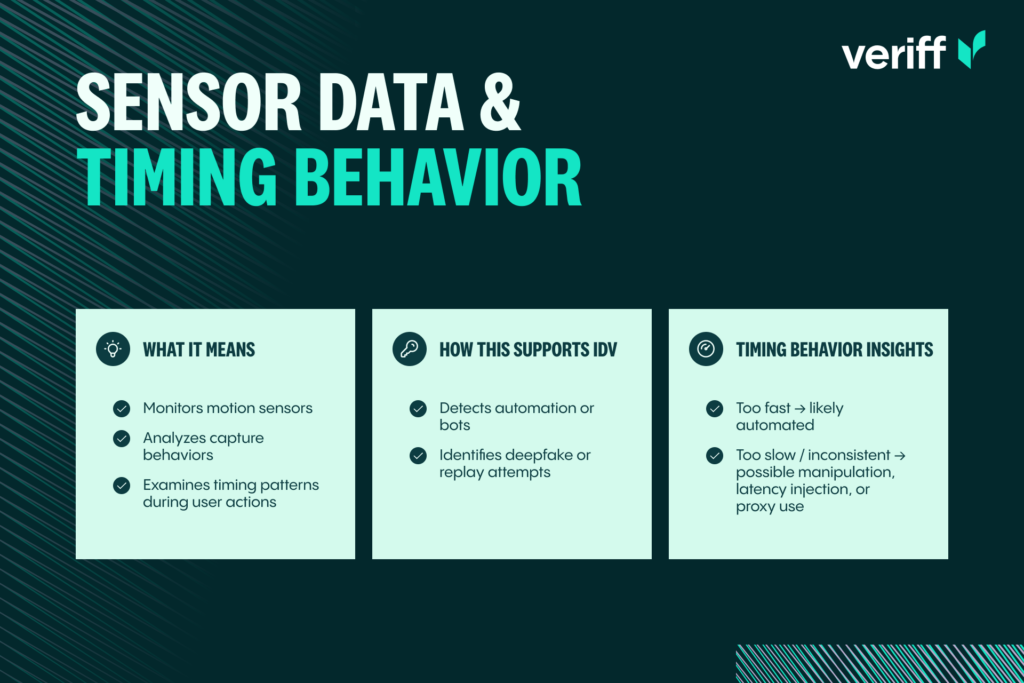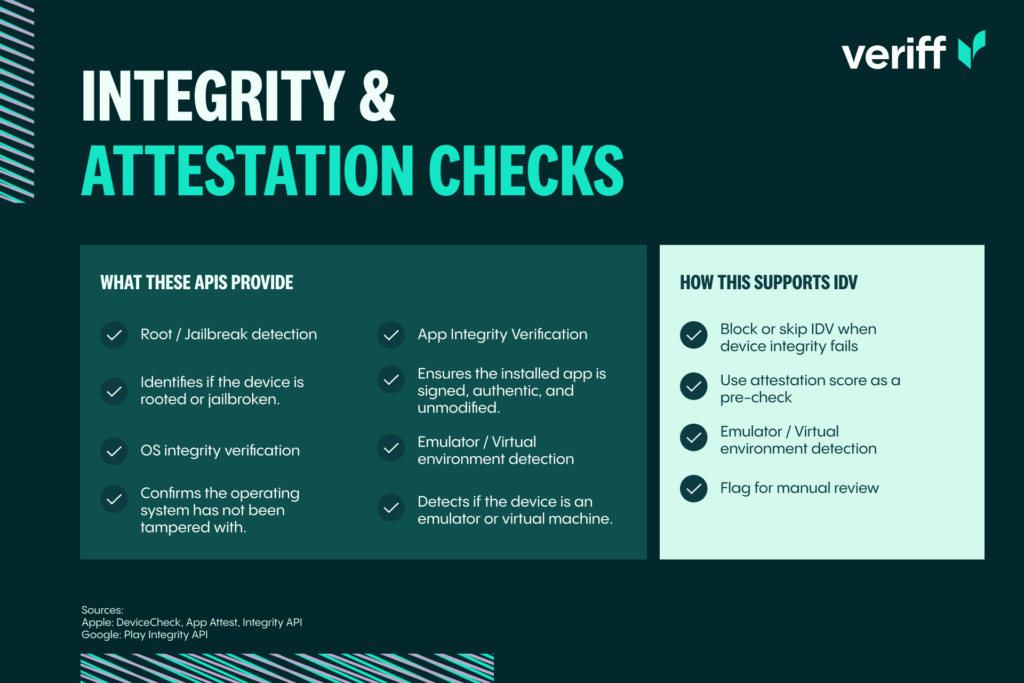Fraud Article
Emulator and injection attacks: Emerging threats to digital businesses in 2026
As businesses expand their digital presence, the sophistication of fraud attempts has risen dramatically. Emulators and injection attacks have been around for some time, but, as the technology used to carry out these attacks has become more sophisticated, these types of attacks are posing an ever-increasing threat to businesses.

Among the numerous tactics fraudsters employ, emulators and injection attacks have emerged as significant threats to the integrity of digital ecosystems. Both of these techniques allow fraudsters to bypass traditional detection systems, making them a serious concern for enterprise fraud professionals. This article delves into what emulators and injection attacks are, how they operate, and why they pose such a severe threat to digital businesses.
Emulators: simulating devices to deceive systems
At its core, emulators simulate the behavior of legitimate devices, such as smartphones or computers, to commit fraud. Emulators are powerful tools commonly used in software development to test applications across different devices and operating systems without needing physical hardware. However, fraudsters have weaponized this technology to launch deceptive activities at scale.
How emulator fraud works
Fraudsters use emulators to mimic the behavior of real users, allowing them to manipulate apps, websites, or payment systems in ways that are difficult to detect. And, because they can be automated, the scale at which fraud can be committed is potentially huge. By simulating different devices, fraudsters can make a device look like multiple devices (device farms) or emulate a specific device to appear to be a genuine device to commit fraudulent activities. For example:
- Account takeover (ATO): Using emulators it is possible to mimic genuine user sessions and bypass security measures to gain access to accounts.
- Payment fraud: Once an account has been accessed it is possible to conduct unauthorized transactions through emulated devices, often avoiding detection due to the sophistication of the emulated environment.
- Bot attacks: Once a weakness has been identified it is possible to execute large-scale, automated fraud campaigns that mimic human behavior across various devices.
- Multi-accounting and bonus abuse: Being able to fraudulently access systems at scale by using emulators to mimic multiple devices allows fraudsters to create multiple accounts to take advantage of sign-up bonus or free bets in gaming, crypto, or currency exchange platforms.
What makes emulator fraud particularly dangerous is its ability to bypass traditional detection systems that rely on device fingerprinting or behavioral biometrics, and the fact you can do this at scale. Since emulators can spoof a range of legitimate device characteristics (such as operating system versions, IP addresses, and user-agent strings), many security tools that focus on recognizing unique device traits are rendered ineffective.

Injection attacks: manipulating sessions to gain access to systems
While emulator attacks focus on simulating devices, injection attacks are a type of fraud where a malicious actor injects false or synthetic data into the identity verification flow to bypass the system and gain unauthorized access to the service.
How do injection attacks work?
Injection attacks can occur when fraudsters use techniques like emulators, virtual cameras, or other methods to inject false biometric data, such as fake facial images, or false document data, such as fake documents generated with self-serve fraud tools, into the verification process.
The goal of these injection attacks is to convince fraud-prevention systems that the injected data is legitimate, allowing the fraudster to bypass security measures and gain access to services. For example, a fraudster may use a deep fake video or synthetic identity to inject false facial images into an onboarding verification flow, tricking the system into thinking it’s a legitimate user.
Stay ahead of online fraud threats
The digital landscape is evolving, and so are fraud tactics. Learn about the six major trends shaping online fraud today and how you can protect your business.
Why emulator and injection attacks are serious threats
Both emulator fraud and injection fraud are highly sophisticated techniques that can have devastating consequences for digital businesses. Here’s why they represent such a significant threat:
1. Evasion of traditional fraud detection systems
Both emulator fraud and injection fraud are adept at bypassing conventional fraud prevention mechanisms. Emulator fraud can evade device fingerprinting, IP blocking, and CAPTCHA tests by mimicking human behavior. Similarly, injection fraud targets vulnerabilities in a system’s code, bypassing security mechanisms that rely on predictable behavior or structural integrity.
2. Scalability and automation
One of the most dangerous aspects of these fraud types is their scalability. Fraudsters can use emulators to control hundreds, if not thousands, of virtual devices simultaneously, allowing them to commit fraud at scale. Injection fraud, on the other hand, can automate attacks across multiple systems, exploiting vulnerabilities in real-time, often without immediate detection.
3. Increased risk to sensitive data
Emulator and injection fraud can expose vast amounts of sensitive customer data, from personal information to financial details. For businesses, this not only poses direct financial losses but also regulatory and reputational risks, especially in the age of data privacy regulations like the GDPR and CCPA.
4. Undermining customer trust
When businesses fall victim to these types of fraud, it’s often the customers who bear the brunt. A compromised digital experience, particularly when it involves the loss of personal data or financial fraud, can lead to long-term damage to a brand’s reputation. Customers expect businesses to safeguard their data and financial assets, and any breach of that trust can lead to lost revenue and customer attrition.
5. Costs of remediation
Both emulator and injection fraud can be costly to remediate. Once an attack has occurred, businesses often need to invest heavily in forensic investigations, patching vulnerabilities, and compensating affected customers. Additionally, regulatory fines for failing to protect customer data can be substantial, compounding the financial impact of these attacks.
Defending against emulator and injection fraud
While emulator and injection fraud present serious challenges, enterprise fraud professionals can mitigate the risks with a multi-layered security approach:
- Behavioral analytics: Instead of relying solely on device-based detection methods, businesses can use behavioral analytics to monitor for suspicious activity patterns, such as unusual transaction volumes or irregular login times.
- Code auditing and vulnerability testing: Regularly auditing application code and conducting penetration tests can help identify and patch vulnerabilities before they can be exploited.
- Machine learning algorithms: Machine learning-based fraud detection systems can help identify anomalous behavior across both emulated devices and manipulated code, even as these techniques evolve.

- Web application firewalls (WAFs): Deploying WAFs with advanced threat detection capabilities can help defend against injection fraud by blocking suspicious inputs or known attack vectors in real-time.
- IP and device fingerprinting: This involves analyzing various attributes of the device and the network used to access the online service, such as the browser type, operating system, screen resolution, location, etc. These attributes can generate a unique identifier linking multiple accounts to the same device or IP address.
- Email analysis: This involves checking the validity and uniqueness of the email address used to register or log in to the online service. Some indicators of suspicious email addresses are disposable or temporary emails, emails from unknown domains, emails with random or similar usernames, etc.
- Face authentication: This involves biometric analysis of the user’s face and facial movements to ensure true presence during the account creation or verification process. This, together with the velocity abuse and multi-accounting prevention, can help reduce the risk of users creating multiple accounts using fake or stolen identities.
- AI-driven algorithms: This involves using machine learning and artificial intelligence to monitor and analyze the behavior and patterns of the users on the online service. This can help detect anomalies, such as multiple accounts placing similar bets on the same events, multiple accounts writing fake reviews or feedback, multiple accounts abusing promo codes or coupons, etc.

Conclusion: Staying ahead of the fraudsters
Emulator fraud and injection fraud are rapidly evolving tactics that pose significant risks to digital businesses. Their ability to bypass traditional security measures, scale effortlessly, and cause extensive damage makes them formidable adversaries for enterprise fraud professionals. By understanding how these threats operate and implementing robust, multi-faceted defenses, businesses can stay one step ahead and protect their digital ecosystems from these increasingly sophisticated forms of attack.
In today’s fast-paced digital environment, staying informed and agile is the key to defending against the ever-evolving world of cyber fraud.
- SQL injection (SQLi): Inserting malicious SQL code into queries to manipulate databases.
- Cross-site scripting (XSS): Injecting scripts into web pages to steal data or hijack sessions.
- Command injection: Executing arbitrary system commands through vulnerable applications.
- Code injection: Injecting and running arbitrary code in a vulnerable system.
- LDAP injection: Manipulating directory service queries with malicious LDAP code.
What is an injection attack?
An injection attack occurs when an attacker sends malicious code into a system to alter the way commands are processed, often leading to unauthorized access or data manipulation.
What are the common types of injection attacks?
SQL injection (SQLi): Inserting malicious SQL code into queries to manipulate databases.
Cross-site scripting (XSS): Injecting scripts into web pages to steal data or hijack sessions.
Command injection: Executing arbitrary system commands through vulnerable applications.
Code injection: Injecting and running arbitrary code in a vulnerable system.
LDAP injection: Manipulating directory service queries with malicious LDAP code
What are some examples of emulation attacks?
Device emulation: Attackers emulate a trusted device to bypass authentication and access protected networks.
Application emulation: Malicious actors replicate software applications to exploit vulnerabilities.
Network emulation: Mimicking network protocols to intercept or manipulate data transmissions.














